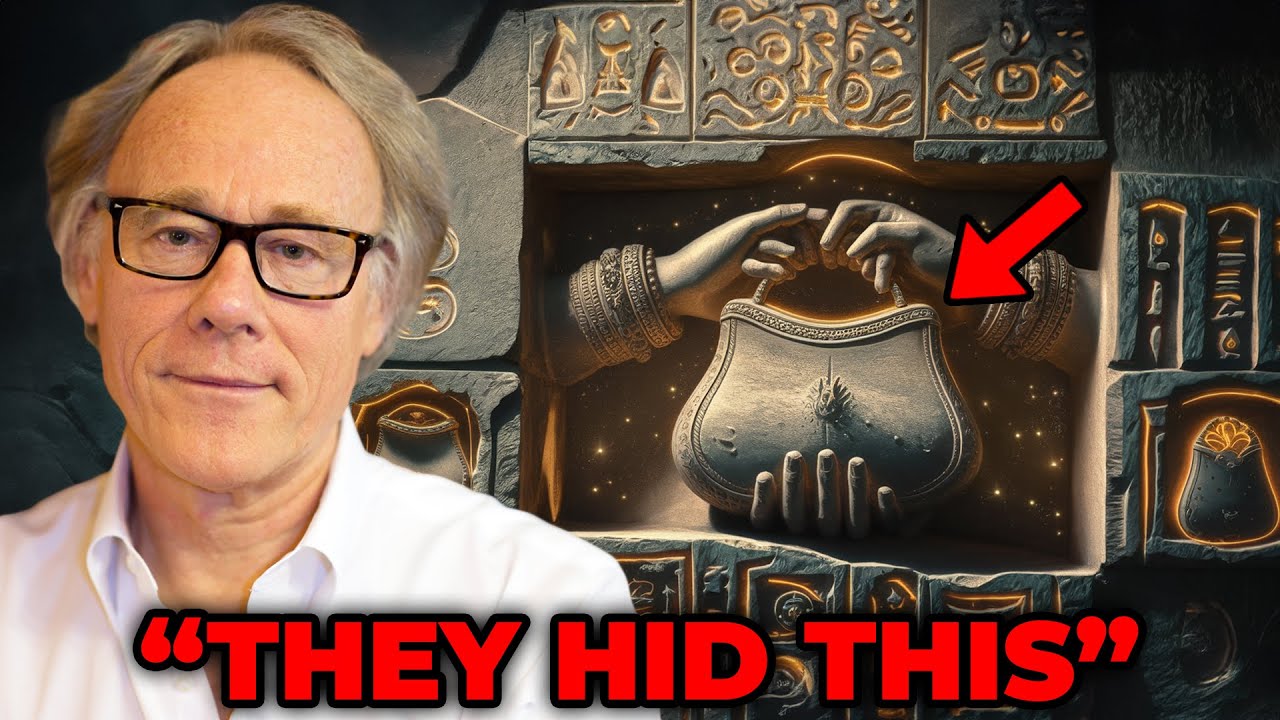Graham Hancock and the Secret of the Ancient Handbag

Across continents, a strange little symbol carved into stone has puzzled archaeologists and historians. It’s the shape of a “handbag”—the same one that appears in the hands of the figures credited with bringing civilization to humanity, from ancient Sumer to Assyrian temples, Mesoamerican pyramids, and even Maori legend. Despite being separated by time and space, this symbol—a box-shaped bag with a curved handle—has been carved, painted, and woven into the fabric of ancient cultures around the world. What makes this symbol so ubiquitous? Is it simply a familiar object, or is there something deeper? Scholars have proposed many theories: some believe it was a ritual vessel, others believe it was a cosmic symbol. Today, we will explore the story of the “ancient handbag”, and the timeless and spatial mysteries it carries.
**Göbekli Tepe – 13,000 years of history, a curious symbol **
Located in southeastern Turkey, Göbekli Tepe is one of the oldest known man-made temple complexes, dating back more than 13,000 years. Here, giant T-shaped stone pillars are decorated with carvings of animals, snakes, and strange human-like figures. Among these carvings, a small detail is often overlooked: groups of “handbag” symbols carved side by side. With their simple appearance – square body, curved handle – they seem very modest compared to the images of animals and gods, but they appear repeatedly and deliberately.
The curious thing is that the people who built Göbekli Tepe are believed to have lived as hunter-gatherers, without developing agriculture. Yet they built a complex and symbolic structure. The “bags” could have been sacred objects, carrying sacrificial offerings, or symbols of some invisible power. Their presence next to animals such as wild boars or vultures further suggests a deeper ritual story that has yet to be deciphered.
**Assyria – religious symbol in purification rituals**
Thousands of years after Göbekli Tepe, in the ancient Assyrian empire, the image of bags reappeared in stone reliefs decorating palaces such as those at Nineveh. The winged figures – often called “genies” – held two objects: a small bucket and a pointed cone. The cone is believed to be a pine cone or the male flower of a date palm, used to sprinkle pollen on crops – an act that had both agricultural and spiritual significance.
The bucket, made of leather, metal or textile, could contain holy water or pollen. During the ritual, the gods would dip the cone into the bucket and sprinkle the water or pollen on people, plants, or objects – a ritual of purification, associated with fertility and divine grace. Here, the “bag” is no longer a trivial object, but has become a sacred tool connecting the material world with the divine.

**Mesoamerica – coincidence or a common universal symbol?**
Half a world away from Assyria, in the jungles of southern Mexico, the Olmec and Maya civilizations left similar carvings. The figures in the rock paintings are depicted walking with a small box-shaped bag on their arm – similar to those found at Göbekli Tepe or Assyria. Although there is no evidence of cultural contact between these civilizations, the “bag” symbol is clearly present.
Could these civilizations have arrived at the same symbol without contact? Could it be a universal symbol, associated with ritual, power, or sacred knowledge? Whether it is coincidental or a lost stream of ancient knowledge, the bag remains an unsolved mystery.
**Maori – three baskets of the gods and a symbol of wisdom**
In New Zealand, Maori legend tells of Maui – a hero who crossed over to the spirit world to bring back three baskets filled with knowledge. Among them were the ways to grow crops, observe the stars, and build boats – vital skills. The shape of these baskets – woven from linen or carved from wood – is similar to the “bag” symbol found on rocks from other civilizations.
Although not embedded in the rock, the symbol has been passed down through oral tradition as a vessel containing divine knowledge, symbolizing the connection between humans and the gods. Here, it is not simply a container, but an invisible treasure – carrying knowledge, tradition and cultural identity.
Ancient Egypt – bag, altar, or sacred tent?
In ancient Egyptian hieroglyphics, a symbol resembling a small handbag with a curved handle often appears next to the names of Pharaohs or hanging from the belts of priests. Some have suggested that it represents a sacrificial altar or a container for incense. But others have suggested that it represents a small, portable tent – a miniature church that priests could carry around – similar to the nomadic tents or tepees of North American Indians.
If so, the “bag” shape represents a portable temple – a dwelling place for the gods, shrunk to fit in the hand. This suggests that the symbol could represent both material and spiritual aspects – from shelter to supernatural power.

Ritual bag – sacred object or cosmic symbol?
It has been suggested that ancient bags contained sacred items such as healing powders, hallucinogenic herbs, or ritual objects. In Assyrian culture, the bucket and cone played a role in ritual purification – symbolizing fertility and rebirth. In Mesoamerica, the bag may have been a symbol of power. For the Maori, it was a symbol of divine knowledge.
Some scholars have even suggested that the bag represented the connection between heaven and earth – the curved handle symbolizing the invisible sky, the square body the earth. It is a simple image but encapsulates the meaning of the universe, the reconciliation of the visible and the invisible, the material and the spiritual.
Bold theories – time travel and ancient technology?
Of course, there are also theories that go beyond the scope of conventional archaeology: could it be a symbol of lost technology or even evidence of time travel? Some ancient carvings show figures wearing hoods and holding objects that look like phones or laptops. Some researchers have speculated that these “bags” are energy devices, technological tools from a lost advanced civilization.
Although not accepted by mainstream academia, these theories stretch the imagination, making us wonder: could these symbols be signals from an ancient world with more wisdom than we think?
Graham Hancock and the Lost Civilization Hypothesis
Explorer Graham Hancock believes that an advanced civilization existed before official history. According to him, the bag symbol represents “sages” – people who survived a global catastrophe and carried knowledge around the world to restore humanity. They are depicted in legends as gods or messengers – carrying bags containing laws, farming techniques and culture.
Believe it or not, Hancock’s perspective opens up another lens: that each “ancient handbag” may be a trace of a forgotten chapter of history – where knowledge was not just written in books, but carved in stone.








